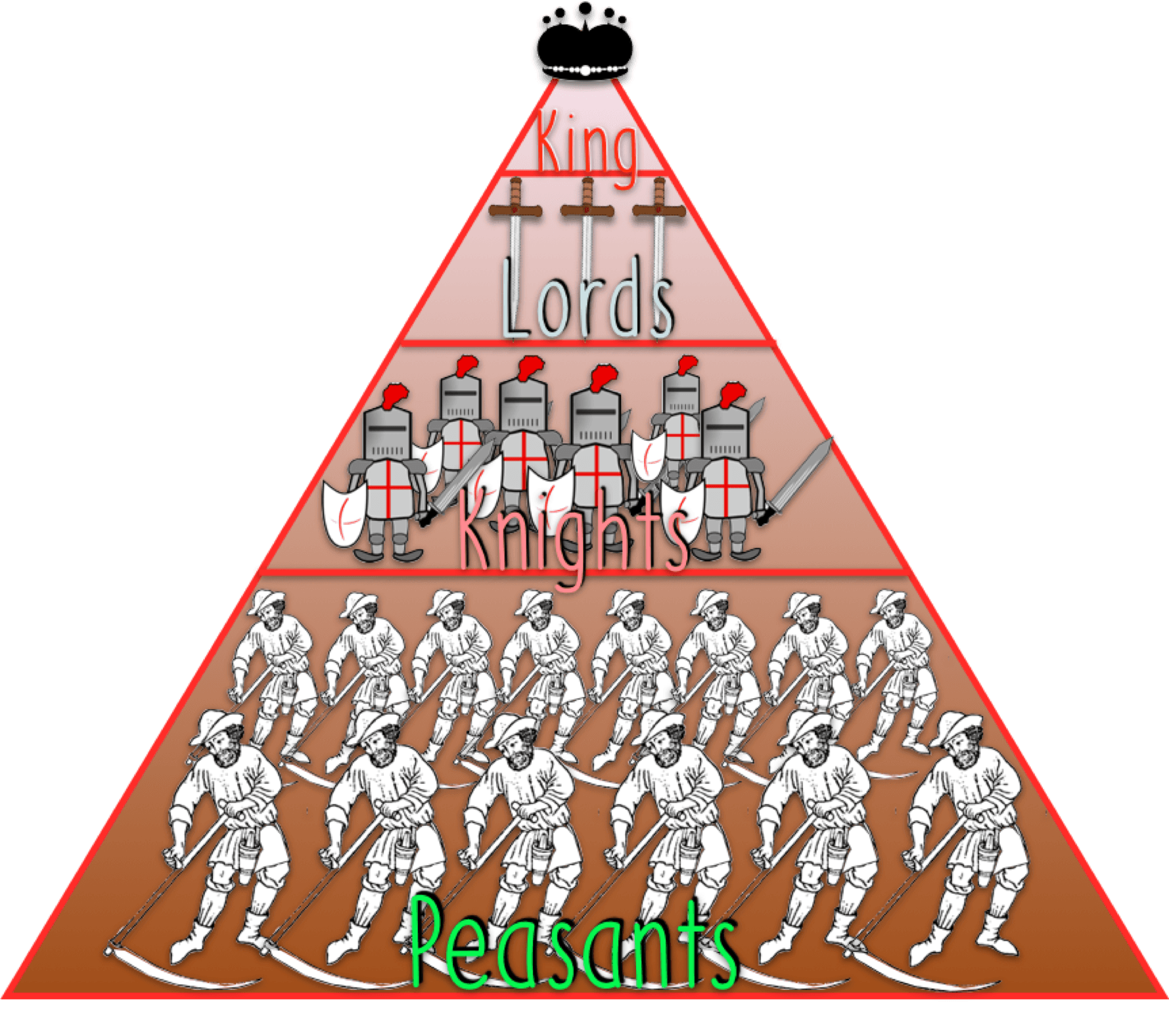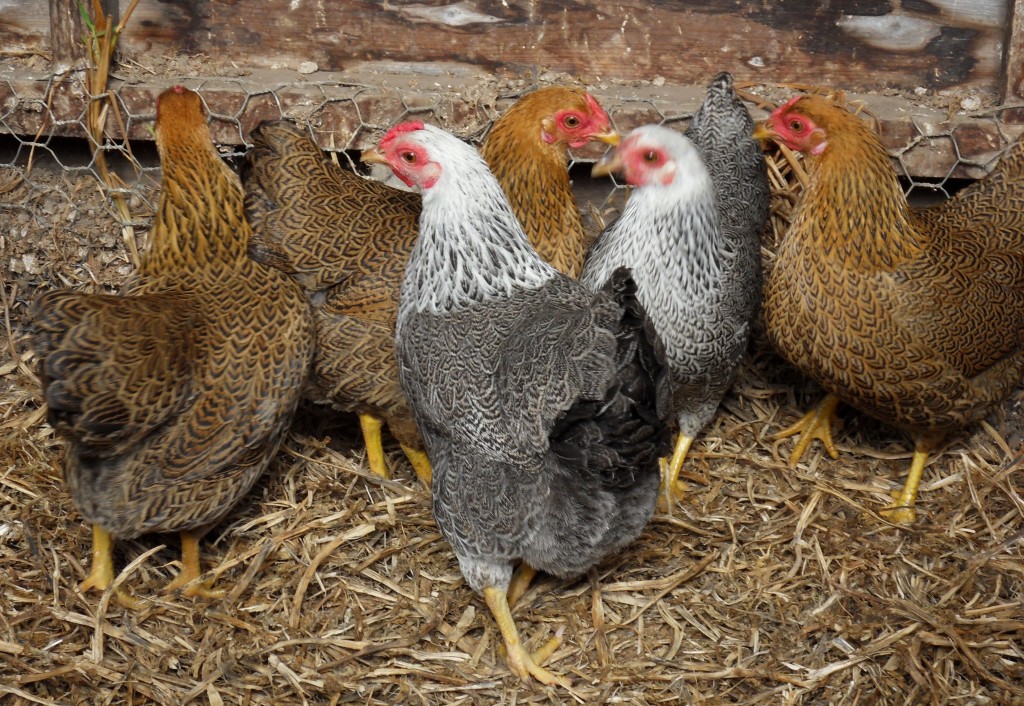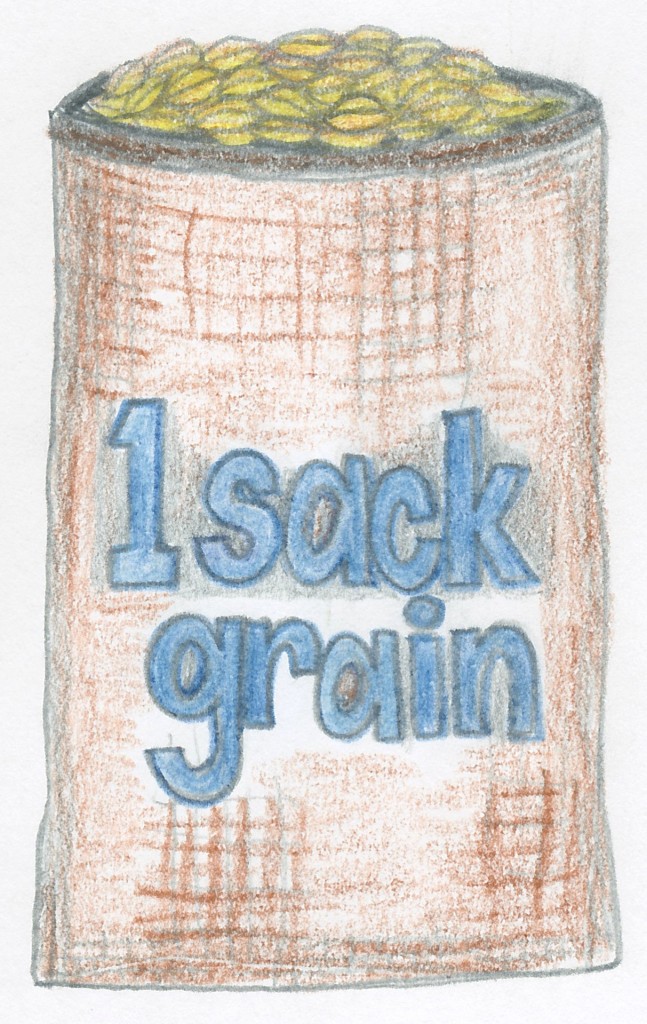Introductory Quiz: The Feudal System – Level by Level

Introduction
Ever since human beings gradually switched from a life of hunting and gathering to one of organised agriculture, human societies have been based on some kind of hierarchy.
A hierarchy is a ranking system or an orderly social structure, in which each person or group has a role to fulfil, generally accepted responsibilities and duties to carry out and widely varying wealth, prestige and power.
In prehistoric times, of course, there would still have been leaders and people with special roles such as tool-makers or potters. Most historians believe, however, that these small groups of nomads had an intimate, egalitarian lifestyle which was not really conducive to elaborate and systematic ranking systems.
Some kinds of animals have hierarchical structures too. For instance, chooks peck the chooks that are below them in status, while they submit to being pecked by those above them. This hierarchy is evident in many human interactions, though it is rarely quite so straightforward and predictable. Humans have much more subtle and complex ways of dominating others than simply pecking them!
The concept of a pecking order was first observed by a biologist called W. C. Allee. He noticed in the 1920s that chooks peck each other according to their power or status in the farmyard. The most powerful chook pecks all the others. The least powerful chook is pecked by all the others. In between are the chooks who are pecked by those above them and who peck those below them.

During the Middle Ages, the European feudal system was in a sense a much more complicated kind of pecking order. People certainly knew their place; their position in society was unlikely to change much in the course of one lifetime. If you were born a peasant, you were overwhelmingly likely to die a peasant – after a life of intensive labour and anxiety about survival (see this blog page). In comparison, the hens on the right seem very happy, even if some of them have to put up with a bit of pecking.
The feudal system was not just a one-way pecking system, but a system of reciprocal rights and duties. The people at the top had responsibilities as well as privileges, but they certainly wielded much more power than those at the bottom. The lowly peasants and serfs experienced a life of grinding toil. For them, hardship was unavoidable and hunger common, especially at certain times of the year; starvation was a serious possibility.

One reason for this was that the yield from the peasants’ crops was often quite meagre, especially when you factor in the taxes they had to pay to the Church and their lord. One source calculates that for every sack of grain they planted, they would harvest four.* One of these would need to be kept to plant the following year. A tenth would be paid to the Church and a tenth to the lord. That would leave them with about 2.2 sacks of grain for each one planted. You can understand why their lives were precarious. One poor season, one bad harvest or one unexpected war in which a peasant had to fight could wipe out their surplus and plunge them into a desperate situation.
Online Activities
♦ Introductory Quiz: The Feudal System – Level by Level (also embedded above)
♦ Essential Vocabulary: A Quiz about the Feudal System
Handouts
The Feudal System and Peasant Life | Suggested Answers
The Feudal System: Revision and SWOT Analysis
Recommended Websites
♦ Article: A General Overview of Feudalism
♦ Article: Medieval Life and Feudalism (+ Useful Diagram)
♦ Article: Definition and Explanation of Feudalism
♦ Article: The Meaning of Fealty
Recommended Videos
♦ The Feudal System and the Domesday Book
♦ 4-Minute Video: The Feudal System
Key Vocabulary
fealty • feudalism • fief • hierarchy • nobility • serf • vassal • villein
